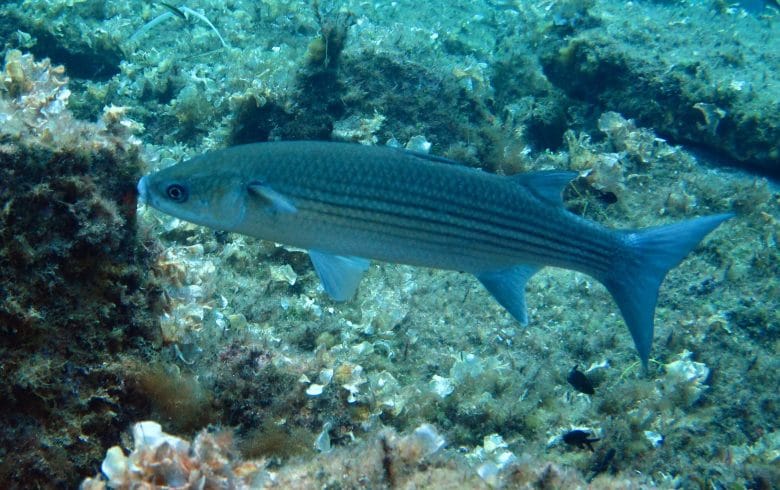
The thicklip mullet has a tapered body and large, flat head with a short, blunt snout. It has a distinctive thick upper lip with small tubercles. It has a blueish grey back and silvery sides and stomach striped with fine, dark, longitudinal lines. The thicklip mullet lives in schools and feeds on seaweed, small invertebrates or detritus. It measures 60cm long at most. In winter it lives offshore and moves to coastal waters, estuaries, lagoons and harbours in the spring. It is found all over the Mediterranean except in the Black Sea, and from Norway to Morocco in the Atlantic. The females are particularly prized for their roe, which is pressed, cured in salt and dried to make a well-known delicacy called “Poutargue”.
Phylum: Vertebrates
Class: Osteichthyes
Order: Perciformes
Family: Mugilidae
Scientific name: Chelon labrosus
French: Mulet lippu
Spanish: Lisa
Italian: Cephalo bosega
German: Grosslippige Meeräsche






















